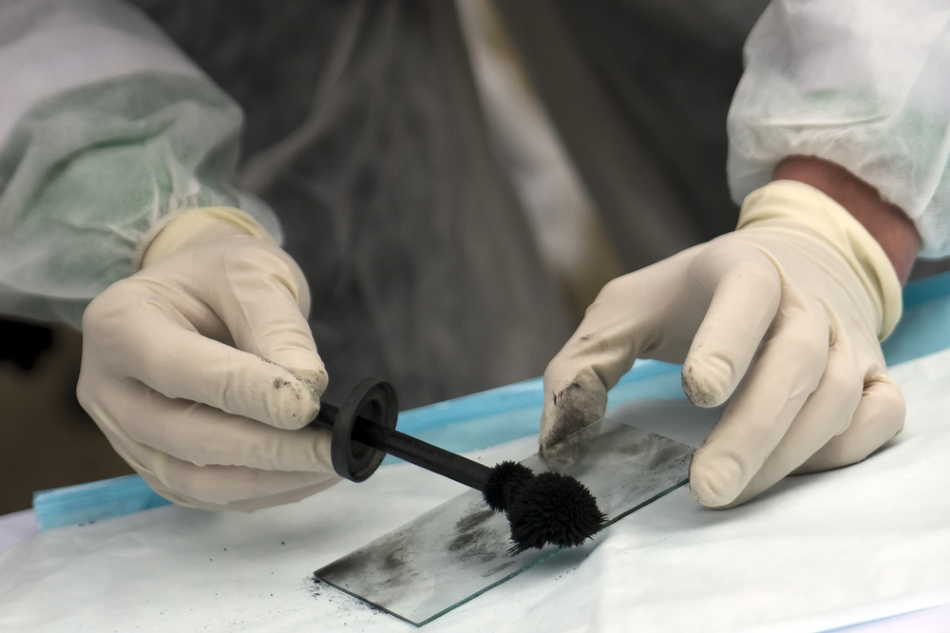
Image Credit: Alexandru-Radu Borzea/Shutterstock.com
Biometrics are a hot topic. New methods of identifying individuals are developing at an ever-increasing pace and biometric data, whether that might be facial, iris or even speech recognition are all being used to fight fraud, protect data or even track criminal or terrorist activity. Who would have imagined that by employing innovations in nanotechnology, one of the earliest biometric identifiers, the fingerprint, could be used to gather even more information from their owners than just their identification?
What is Special about Fingerprints?
Fingerprints were used as a method of identification by the Chinese as early as the third century BC. It was noted in “The Volume of Crime Scene Investigation - Burglary,” from the Qin dynasty that no two individuals have fingers precisely alike. Hard to believe that it was over two thousand years later that a fingerprint was used as admissible evidence in a court of law, as happened in the United States during the Clarence Hiller murder case in Chicago in 1910.
The perpetrator, Thomas Jennings – an African-American man - was stopped a half-mile away from the crime scene wearing a torn and bloodied coat and carrying a revolver. But he left behind a fingerprint on a freshly painted railing that he used to hoist himself through a window at the Hiller house. That print became the focal point of the trial. Despite his defense team’s efforts, they could not disprove the theory that all fingerprints are unique and Jennings was convicted and hanged.
In the case of forensics, fingerprints can only be matched to the individual. That means you need the “suspect’s” fingerprints for comparison. However, this age-old technique of identification has the potential to provide much more information regarding an individual when new developments in nanotechnology are introduced to the science of fingerprinting.
How Nanotechnology is Obtaining Information from Fingerprints
Nanocarrier-based bio labeling has been used to develop latent fingerprints and, as a result of the high sensitivity and selectivity, it is possible to collect reliable additional chemical information from them. Nanoparticles combined with an antibody were able to detect the presence of a drug/metabolite in fingermark residues, as well as obtaining an image of the latent fingerprint.
However, current immunoassay methods have a limitation in that only one drug can be checked in a single fingerprint by one test. In practical use, it is usually not known which drugs may be present, so there isn’t a specific drug to test for. The number of fingerprints at a crime scene may be limited, so it’s important to be able to extract as much information from each print as possible.
Researchers from Zhejiang Police College in collaboration with the School of Materials Science and Engineering, Zhejiang have devised a novel method of using color fluorescent polystyrene nanoparticles as nano carrier-based biological fluorescent probes for detecting drugs in a latent fingerprint.
Drugs are left on fingertips through contamination by contact from drug users and those handling drugs, or by excretion from sweat pores after drug use. The drugs together with eccrine sweat and sebum from the finger skin form an impression of the finger's ridge pattern we know as a latent fingerprint.
Applying their new method, the researchers used nano carrier-based biological fluorescent probes for ketamine and amphetamine that were prepared by binding red and green fluorescent nanoparticles (150-nm-sized) with anti-ketamine (KET) and anti-amphetamine (Amp) antibodies, with the assistance of carbodiimide/N-hydroxysuccinimide.
Using probes for ketamine and amphetamine enabled simultaneous detection of both drugs from a single fingermark with a one-step test without additional antibodies. Nanoparticles as carriers performed both roles, visualization of the fingerprint and recognition of the drugs. Latent fingerprints were imaged by the fluorescence signal generated from nanoparticles and the developed fingerprints revealed ridge patterns and sufficient detail for individual identification.
Ketamine and amphetamine were recognized by just observing the colors of the fluorescent images when the fingerprint was checked in red and green channels. The detection limit for the drug is 50 ng in a fingerprint.
Being able to combine evidence of drugs with personal identification in a fingerprint helps to build a credible chain of evidence. Multiple drugs could be detected in a single fingerprint as long as there are fluorescent nanoparticles with different colors that can be checked in additional channels.
In recent years ketamine and amphetamine have been two of the most commonly abused synthetic drugs in China, both of which are damaging to the central nervous system as well as causing other health problems. However, this novel method can be extended to the detection of other drugs, metabolites or any molecules that have specific antibodies and could prove a valuable tool to identify and combat drug abuse.
References and Further Reading
Zhou J et al (2019) Nanocarrier-based biological fluorescent probes for simultaneous detection of ketamine and amphetamine in latent fingermarks https://www.worldscientific.com/doi/pdf/10.1142/S1793292019500267 (accessed 28th February 2020)
Fingermark imaging for drug detection https://www.eurekalert.org/pub_releases/2019-03/ws-fif031419.php (accessed 28th February 2020)
Kolhatkar G et al, (2019) Latent Fingermark Imaging by Single-Metal Deposition of Gold Nanoparticles and Surface Enhanced Raman Spectroscopy https://www.ncbi.nlm.nih.gov/pmc/articles/PMC6584961/ (accessed 28th February 2020)
Disclaimer: The views expressed here are those of the author expressed in their private capacity and do not necessarily represent the views of AZoM.com Limited T/A AZoNetwork the owner and operator of this website. This disclaimer forms part of the Terms and conditions of use of this website.